Rising Demand
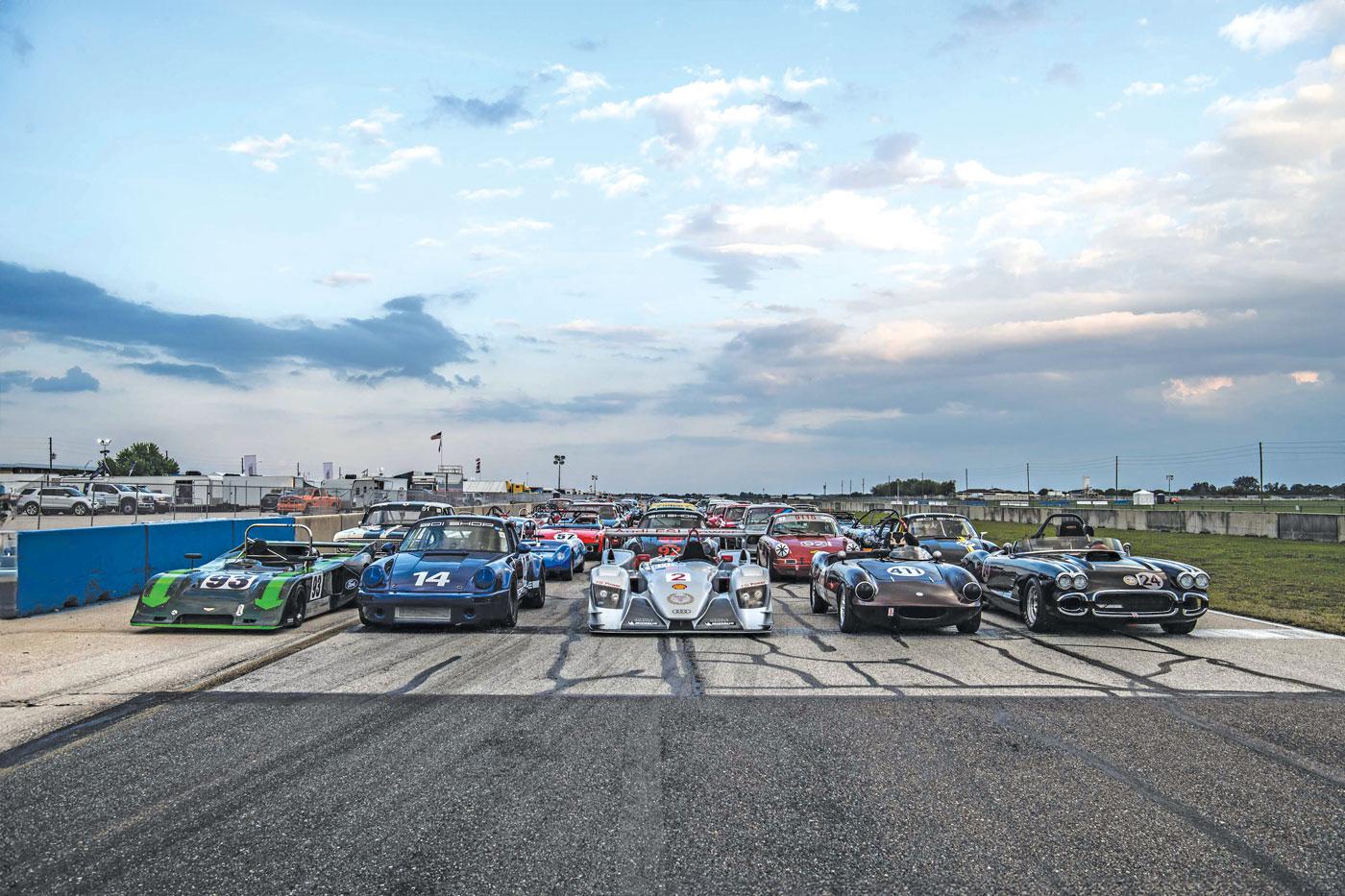
Vintage series are enjoying record car counts as interest continues to climb at a steady rate.
While some disciplines are still struggling to find their footing in a post-pandemic motorsports landscape, vintage racing is decidedly firing on all cylinders. Considering the inherent expense involved in sports car racing, and the additional premiums that are typically attached to anything deemed “vintage,” the strength of the segment may come as a surprise to some. And given that vintage racing isn’t an obvious path for sportsman racers looking to ascend through the ranks in pursuit of a professional career, this success story may seem even more improbable at first glance. But the numbers don’t lie.
“Globally, it’s on an upward trajectory right now,” explained Chris Ward of Historic Sportscar Racing (HSR), Daytona Beach, Florida. “Like everybody in the live event industry, there were some resets needed—some because of the business case, and some because of the customers’ needs and wants. We are seeing a very positive trend emerging. There’s a distinct resurgence in interest in vintage and historic sports car racing. Our first two events of 2024 were record breakers for HSR. Our season opener—the Sebring Spring Fling—brought in 85 cars in 2023. This year, it was 130. Last year we had 233 cars at the Mitty, and we have 282 entries this year.”
Ward cited a pronounced upswing in interest in the organization’s Group 2 and Group 3 categories (1950s and 1960s vintage production cars, and mid-1960s through 1980s small-bore historic production cars, respectively), but the sentiment is consistent throughout vintage racing at large. Yet as we discovered during our discussions with organizers, there isn’t one specific formula for success. Instead, these associations have taken a tailored approach to their formats and events that reflects the expectations of their racers and the shops that support them. That, in turn, has created factions within vintage racing with distinctively unique approaches to the concept.
Defining Vintage
For many, vintage motorsports conjures up mental images of vehicles from those aforementioned categories: race-prepped Lotus 7s, MGs, Alfa Romeos, and the like. But organizations like HSR actually take a much broader approach to the term.
“Our philosophy is that a vintage car or historic car which fits into one of the groups within HSR is eligible to race once the homologation of that vehicle is more than five years old,” said Ward. He explained that while some organizations look at the mid-1970s as the spiritual cutoff for vintage race cars, HSR’s definition offers some key advantages.
“When Historic Sportscar Racing was acquired by IMSA two years ago, it created an alignment of the groups and classes in a number of instances between HSR and IMSA competition from years prior. For example, the wonderful DPi [Daytona Prototype international] cars that only finished IMSA competition two years ago. We have half a dozen of those running with HSR now. If we didn’t have this ruleset, those cars would probably be shuttered away in collectors’ warehouses because they’d have nowhere to race.”
That perspective is shared by Ron Hurst of the Vintage Auto Racing Association (VARA) in Chino Hills, California. Although VARA generally serves a more grassroots portion of the market, in recent years the organization has been turning its attention to newer platforms for many of the same reasons.
“Historically, the cutoff has been 1974 for vehicle eligibility; essentially the pre-smog era,” he said. “I think that had a lot to do with the point in time when the vintage segment really got its start. But today, even a ’94 Miata is 30 years old. So we’ve been updating our definition of what a vintage car is in order to reflect that.”
Hurst also pointed to the skyrocketing values of many 1950s and 1960s sports cars, a trend that has made these vehicles a prohibitively costly proposition for a large portion of would-be racers.
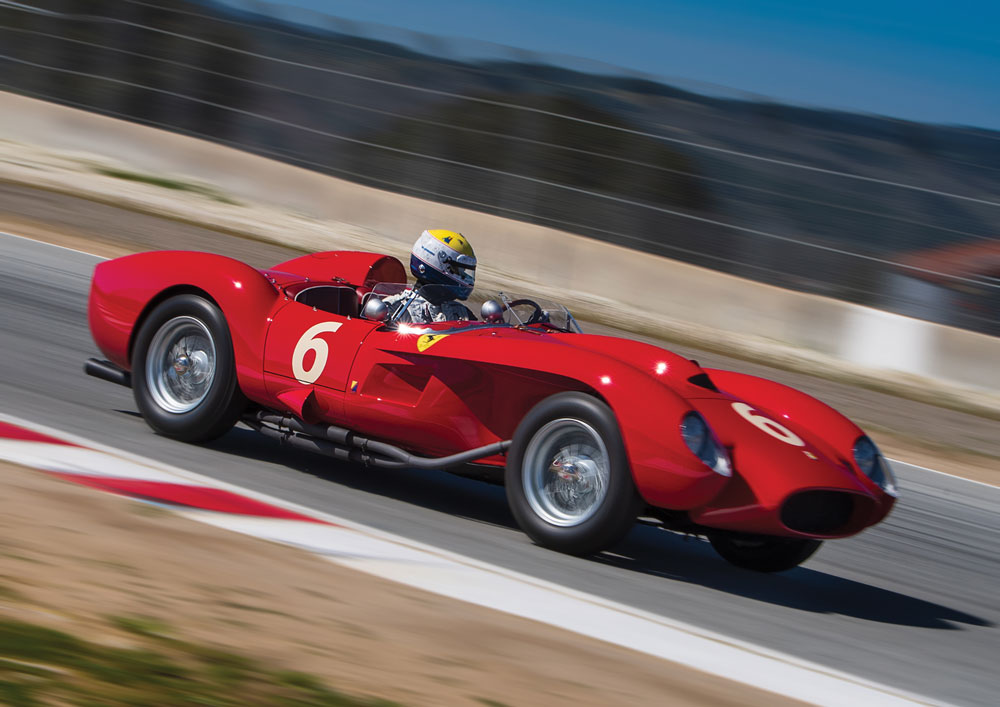
“You have to ask yourself how you are going to keep participation up as many of those cars become too expensive to race,” he said. “What we found is that many of the cars that were raced in the SCCA 20 years ago—Miatas, A Sedan cars like Camaros and Mustangs, and so on—are no longer competitive within the classes that they were running in. So a lot of those cars were left without a home. If you’re a very strict vintage club that only accepts ’50s and ’60s sports cars, I think you’re quickly going to run into trouble because those cars are drying up. You’ve got to think farther forward.”
In recent years, VARA has opened up competition to not only former Spec Miata cars, but also fourth- and fifth-generation Corvettes, ’80s and ’90s BMW 3-Series, and other more modern platforms that would otherwise not have a place to race today.
Meanwhile other organizations, like the Montrose, California-based Historic Motor Sports Association (HMSA), have chosen a different tack. “For production-based cars, our world stops in 1966,” said Cris Vandagriff. “It’s a bit of a sliding scale, though. We’re fans of Can-Am cars, which go until ’74, and the same thing goes for Formula 5000. With Formula 1 cars, we go up to the end of ’84.”
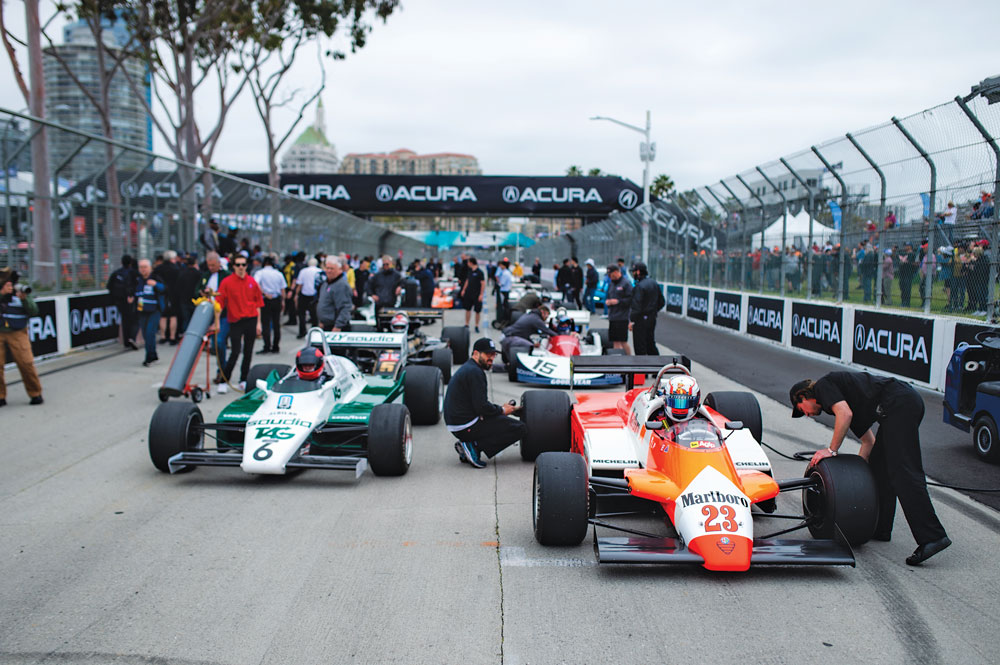
Vandagriff noted that HMSA takes a more faithful approach to the vintage racing concept than some other organizations. “Our rules are really simple: Prepare the car as it was originally prepared. We don’t want modern aero devices on the cars and things like that.”
He also told us that tentpole events like Velocity Invitational—held annually at Sonoma Raceway—and the Rolex Monterey Motorsports Reunion—held annually at WeatherTech Raceway Laguna Seca—have brought greater visibility to the vintage segment for a group of enthusiasts that essentially mirror HMSA’s own clientele and champion its mission.
Vandagriff emphasized HMSA’s commitment to period-correctness, but added, “It’s difficult to stay true to your principles and make the bottom line work at the same time.”
Much like HMSA, the New Britain, Pennsylvania-based Vintage Sports Car Club of America (VSCCA) prizes the historic importance of the cars competing as much, if not more so, than the racing itself.
“One thing I try to instill in people is that we are not a vintage racing club,” said JR Mitchell. “We are a car club that is dedicated to the preservation and history of sports cars in general. We’ve always sought to preserve rather than to get the latest and greatest trick thing on the cars. So our log books are stricter than most others, and the same goes for the rules.”
Mitchell said that while these cars can require a significant upfront investment, VSCCA’s approach significantly reduces another large expense: development costs.
“That’s probably the most expensive part of running a modern car—the constant development that’s required in order to keep up. But these cars are essentially frozen in time, as far as development is concerned,” Mitchell explained. As a result, organizations like VSCCA and HMSA also tend to attract a different type of competitor.
“Generally speaking, these folks aren’t looking for a career in racing, or a return on investment,” he continued. “These people are doing it because they enjoy it and it’s fulfilling to them. The only people who are really making money in vintage racing are the shops. There’s no prize purse involved, and that tends to bring in a different mindset.”
A fairly unique demographic comes along with it. “It’s doctors, lawyers, and Fortune 500 people,” said Vandagriff. “This is the type of thing where you could be sitting in the grandstands and think, ‘Hey—I could do that.’ And then actually go do it.”
A Different Vibe
Without prize money and the prospect of a career in motorsports on the line, vintage events also tend to avoid some of the pretense that’s pervasive in many other racing segments.
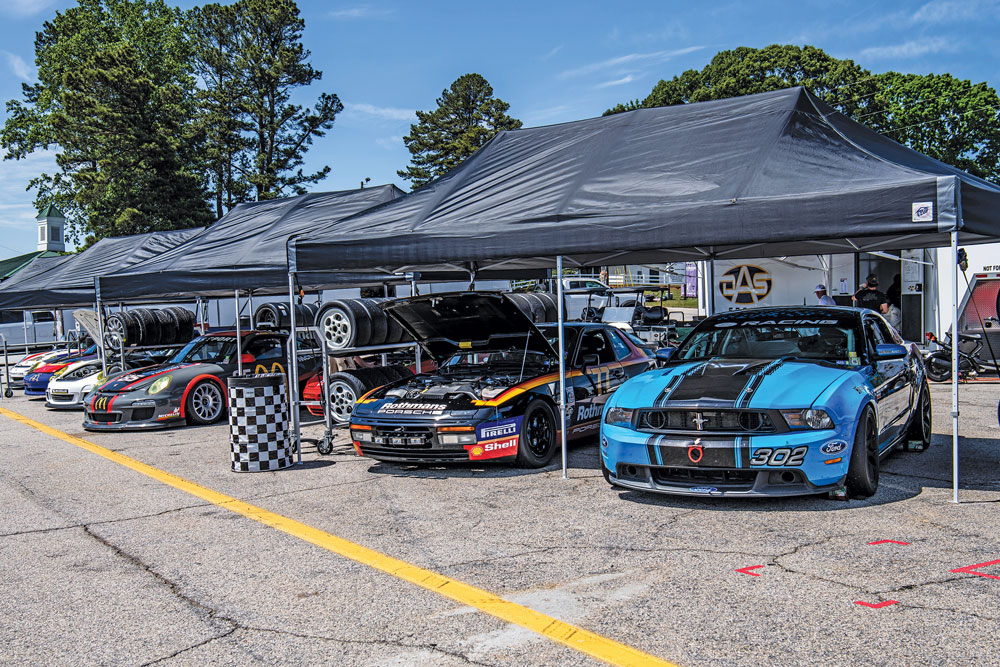
“Without taking anything away from the level of competition that we see in HSR, because it is very competitive, it is different from what we typically see in those types of series,” said Ward, who formerly served as head of motorsport operations for Lamborghini North America. “When the teams get set up on load-in day, the lights aren’t on past midnight with crews doing final tweaks to the cars in preparation for a session the following morning. It’s not that. On load-in day, everyone wants to finish their setups so they can enjoy the social aspect of being in the paddock. It’s a different atmosphere. It’s one of the wonderful things about vintage and historic racing, really.”
Hurst said that, in the vintage segment, the racing itself is the end goal. “Generally speaking, these people have the means to sustain their racing programs regardless of their finishing positions. These folks tend to look at this more as a hobby. The reward is getting to race the car.”
Staying On-Throttle
While social media and livestreaming have been areas of promotional focus for many vintage racing organizations over recent years, most agree that word of mouth continues to be the biggest driver of interest and participation.
“Prior to the pandemic, there used to be a Friday night paddock social at HSR events,” said Ward. “Of course, during the pandemic and the years following, the paddock social disappeared, but we just re-introduced that at the annual Mitty event at Road Atlanta this year. It’s a small world, and when people are having fun, word tends to spread quickly in circles like these. I think that because of this dynamic, we have to make sure that the off-track presentation is as good as how we conduct ourselves on-track. That extends to branding, paddock layout, and these social aspects, which are incredibly important.”
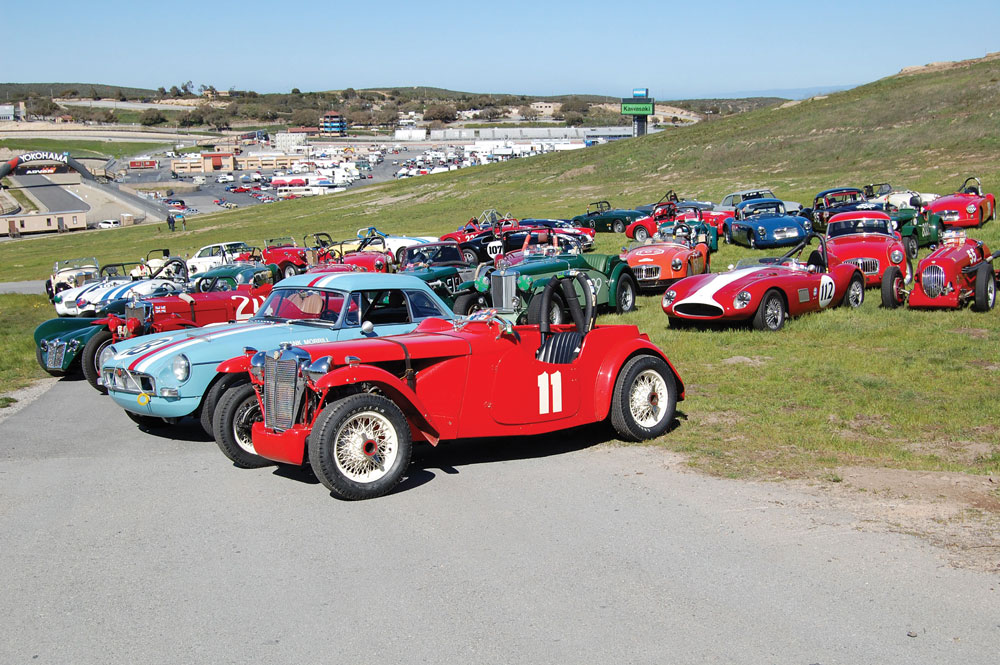
For organizations like VARA, the strategy is focused on finding new ways to expand its reach and get more racers on track. “Every year in January we run a two-day racing school,” said Hurst. “It’s very intensive—8 a.m. to 5 p.m., with classroom instruction, on-track sessions, along with skid pad, braking, and slalom exercises. We take race-prepared cars for people who are working toward a competition license; at the end of the school, graduates are awarded a provisional racing license, and the school counts as two race weekends toward their full competition license. We also offer several levels of high-performance driving instruction for those who bring street cars, and the school provides a great introduction into the world of racing for those folks. Every year we have between 100 and 120 students, and it commonly sells out.”
At $575 for would-be racers and $250 for HPDE (high-performance driving event) students, the school provides a taste of sports car competition for a surprisingly modest fee.
“The first step in getting somebody into a race car is getting them to a race track,” Hurst said. “If you get them on the track and let them experience a little bit of what it’s like to race, they’re hooked.”
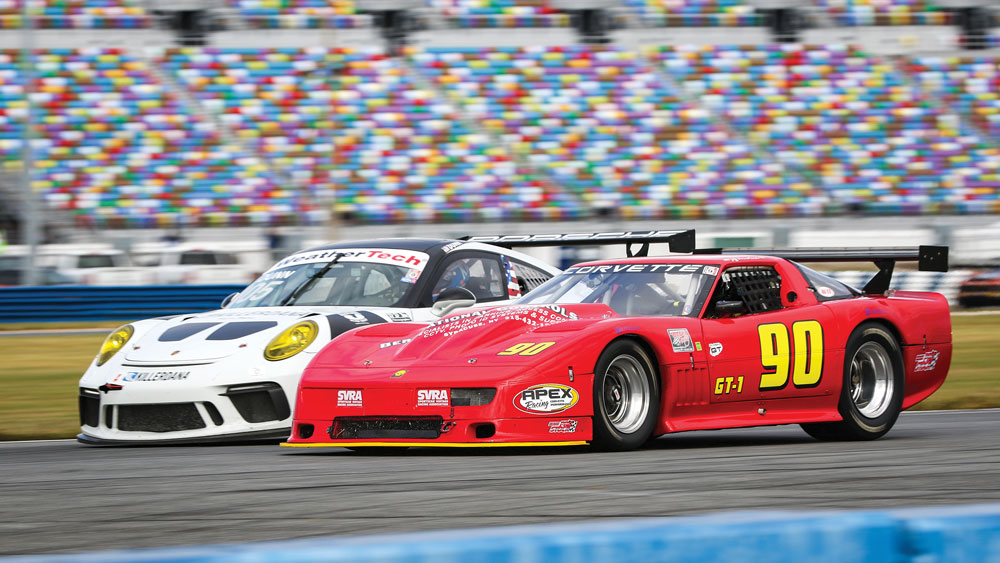
For organizations like VARA, which is effectively using a rolling timetable for vehicle platform eligibility, there’s a sense that as long as people want to race, there will be cars and components available for them to do so. The situation seems more tenuous for outfits that have shied away from moving those goalposts forward, but when asked about concerns regarding vintage parts availability in the future, Mitchell remained optimistic about VSCCA’s prospects.
“The situation isn’t as dire as it used to be. At this point we can simply fabricate parts if we need to. That’s something that we do on a regular basis these days. We’ve made wheels, uprights, bellhousing adapters—virtually whatever there’s a demand for, we can make. In a way, it’s actually getting easier as time goes on. We can scan a part, 3D print it, and CNC it from there. As a result, there’s a lot more stuff available today than there was just a few years ago.”
SOURCES
Historic Motor Sports Association
hmsausa.com
Historic Sportscar Racing
hsrrace.com
Vintage Auto Racing Association
vararacing.com
Vintage Sports Car Club of America
vscca.org
 MEMBERSHIP LOGIN
MEMBERSHIP LOGIN JOIN PRI
JOIN PRI


